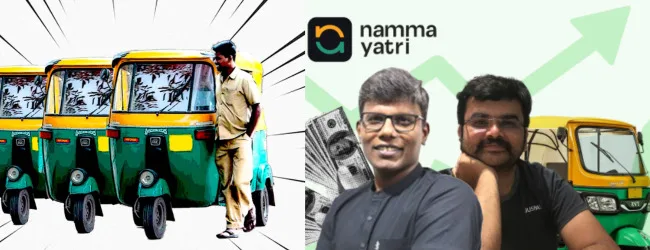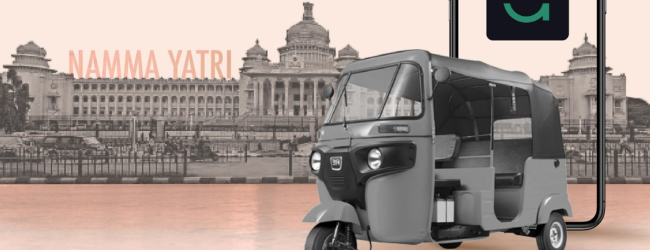Table of contents
- Who Are the Founders of Namma Yatri?
- Founders’ Background
- Vision: A Driver-First Platform
- Journey & Key Milestones
- Business Model: How Namma Yatri Works
- Innovation That Fuels Growth
- Impact in Numbers
- Leadership Style: Transparent & Driver-Centric
- Challenges Faced & How They Overcame
- What Makes Namma Yatri Unique?
- Lasting Impact & Legacy
- Conclusion
- Frequently Asked Questions (FAQs)
Bengaluru’s traffic chaos gave rise to a fresh solution—Namma Yatri, a driver-first mobility platform that puts auto drivers and local commuters at the core of its mission. Built with the idea of empowering drivers and reducing platform commission costs, Namma Yatri is fast becoming a people’s favourite. But who started it? What’s the vision behind it? And how did it scale so fast? In this article, we break down the “namma yatri founder” journey, vision, and impact in a simple, engaging way.
Who Are the Founders of Namma Yatri?

- Conceptualised by: Vimal Kumar (Founder of Juspay)
- Led by: Shan M S and Magizhan Selvan
- Current Operator: Moving Tech Innovations Pvt Ltd (a Juspay spin-off)
While the original idea came from Vimal Kumar, two key players—Shan M S and Magizhan Selvan—took the wheel and are now leading Namma Yatri as an independent entity.
Founders’ Background
1. Vimal Kumar

- Founder of Juspay, a fintech company known for payment solutions.
- Visionary behind open mobility platforms.
- Believer in solving hyperlocal problems with tech.
2. Shan M S (CEO of Namma Yatri)
- Previously with Juspay.
- Strong technical background with a passion for urban mobility.
3. Magizhan Selvan (Co-Founder)
- Also from Juspay.
- Focuses on partnerships, operations, and driver engagement.
Vision: A Driver-First Platform
Core Vision: Empower auto drivers by eliminating middlemen and offering zero-commission rides.
Key Objectives:
- Fair income for drivers
- Transparent fare system
- Open mobility ecosystem (inspired by ONDC principles)
Journey & Key Milestones
| Timeline | Milestone |
|---|---|
| Nov 2022 | Launched as a pilot in Bengaluru with support from Auto Rickshaw Drivers’ Union (ARDU) |
| Jan 2023 | Over 50,000 auto drivers onboarded |
| Mar 2023 | Crossed 1 million rides |
| May 2023 | App downloads cross 2 million |
| Feb 2024 | Officially hived off from Juspay and formed Moving Tech Innovations |
💡 Pro Tip: If you want to start a Business but have too many doubts, connect with a Business expert from Boss Wallah for guidance – Check Out
Business Model: How Namma Yatri Works
- Zero Commission: Drivers keep full fare.
- Subscription Model: Drivers pay a small monthly tech fee (Rs. 25–50).
- Direct Matching: Riders connect with drivers directly.
- No Surge Pricing: Transparent and government-approved rates.
Innovation That Fuels Growth
1. Built on ONDC Mobility Principles
- Open network model
- Interoperable with other mobility services in the future
2. Open Source Code
- Transparent tech stack open for developers
- Enables cities to replicate the model
3. Community Engagement
- Feedback-driven iterations
- Partnership with driver unions and civic bodies
Impact in Numbers
- 2.5+ million app downloads
- 90,000+ active auto drivers
- 4.7/5 average app rating
- 20% cheaper fares compared to competitors like Ola/Uber
- Zero complaints of hidden charges or surge pricing
Leadership Style: Transparent & Driver-Centric

- Flat hierarchy within the company
- Decentralised decisions to empower teams
- Driver-first approach to every feature and update
ALSO READ | The Acko Founder Story: How Varun Dua Built India’s First Digital Insurer
Challenges Faced & How They Overcame
| Challenge | How They Tackled It |
| Resistance from drivers used to Ola/Uber | Partnered with Auto Unions, education campaigns |
| Initial low app adoption | Easy UI/UX, referral bonuses |
| Tech issues during surge usage | Real-time updates, cloud scalability |
ALSO READ | Meet Fitso Founder Trio: Story Behind India’s Fitness Revolution
What Makes Namma Yatri Unique?
- No middlemen, no surge pricing, full transparency
- Built in Bengaluru, for Bengaluru
- Open innovation for the nation
Lasting Impact & Legacy
- Inspired new mobility initiatives in Kochi, Chennai
- Showcased the success of open digital public goods
- Gained national attention as a scalable urban mobility solution
Need Expert Guidance?
Starting a business can be challenging, but you don’t have to do it alone! At Boss Wallah, our 2,000+ business experts are ready to provide valuable insights and guidance. Whether you need help with marketing, finance, sourcing, or any other area of any business, our business experts are here to help you succeed
Confused about Which Business to Start?
Want to start your own business but unsure which one to choose? Explore Boss Wallah, where you’ll find 500+ courses by successful business owners, featuring practical, step-by-step guides on starting and growing various businesses.
Find your perfect business idea today
Conclusion
Namma Yatri isn’t just another ride-hailing app. It’s a movement—a response to exploitative systems, and a bold vision backed by execution and empathy. With its unique leadership team and community-first model, it has not only disrupted the market but is also reshaping urban transportation in India.
Frequently Asked Questions (FAQs)
1. Who is the founder of Namma Yatri?
Vimal Kumar conceptualised it; Shan M S and Magizhan Selvan are the active founders.
2. Is Namma Yatri a part of Juspay?
It started as a Juspay initiative but is now an independent entity.
3. How does Namma Yatri make money?
Through a low monthly tech fee from drivers.
4. Does Namma Yatri charge commission?
No, it’s a zero-commission platform.
5. Is Namma Yatri available outside Bengaluru?
Currently focused on Bengaluru, but expansion is planned.
6. Is the app available on iOS and Android?
Yes, it’s available on both platforms.
7. How is Namma Yatri different from Ola and Uber?
It charges no commission, offers fair fares, and is driver-led.
8. How many drivers are on Namma Yatri?
Over 90,000 as of 2024.
9. What are the fare rates on Namma Yatri?
Fares follow government-approved meter rates.
10. Can other cities adopt this model?
Yes, the code is open-source and replicable.


